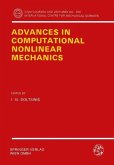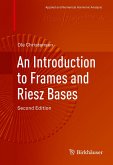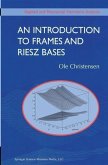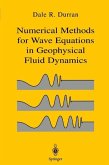This book is an introduction to level set methods and dynamic implicit surfaces. These are powerful techniques for analyzing and computing moving fronts in a variety of different settings. While the book gives many examples of the usefulness of the methods for a diverse set of applications, it also gives complete numerical analysis and recipes, which will enable users to quickly apply the techniques to real problems.
The book begins with the description of implicit surfaces and their basic properties, and then devises the level set geometry and calculus toolbox, including the construction of signed distance functions. Part II adds dynamics to this static calculus. Topics include the level set equation itself, Hamilton-Jacobi equations, motion of a surface normal to itself, reinitialization to a signed distance function, extrapolation in the normal direction, the particle level set method, and the motion of codimension two (and higher) objects. Part III is concerned with topics taken from the field of image processing and computer vision. These include the restoration of images degraded by noise and blur, image segmentation with active contours (snakes), and reconstruction of surfaces from unorganized data points. Part IV is dedicated to computational physics. It begins with one-phase compressible fluid dynamics, then two-phase compressible flow involving possibly different equations of state, detonation and deflagration waves, and solid/fluid structure interaction. Next it discusses incompressible fluid dynamics, including a computer graphics simulation of smoke; free surface flows, including a computer graphics simulation of water; and fully two-phase incompressible flow. Additional related topics include incompressible flames with applications to computer graphics and coupling a compressible and incompressible fluid. Finally, heat flow and Stefan problems are discussed.
A student or researcher working in mathematics, computer graphics, science,or engineering interested in any dynamic moving front, which might change it's topology or develop singularities, will find this book interesting and useful.
The book begins with the description of implicit surfaces and their basic properties, and then devises the level set geometry and calculus toolbox, including the construction of signed distance functions. Part II adds dynamics to this static calculus. Topics include the level set equation itself, Hamilton-Jacobi equations, motion of a surface normal to itself, reinitialization to a signed distance function, extrapolation in the normal direction, the particle level set method, and the motion of codimension two (and higher) objects. Part III is concerned with topics taken from the field of image processing and computer vision. These include the restoration of images degraded by noise and blur, image segmentation with active contours (snakes), and reconstruction of surfaces from unorganized data points. Part IV is dedicated to computational physics. It begins with one-phase compressible fluid dynamics, then two-phase compressible flow involving possibly different equations of state, detonation and deflagration waves, and solid/fluid structure interaction. Next it discusses incompressible fluid dynamics, including a computer graphics simulation of smoke; free surface flows, including a computer graphics simulation of water; and fully two-phase incompressible flow. Additional related topics include incompressible flames with applications to computer graphics and coupling a compressible and incompressible fluid. Finally, heat flow and Stefan problems are discussed.
A student or researcher working in mathematics, computer graphics, science,or engineering interested in any dynamic moving front, which might change it's topology or develop singularities, will find this book interesting and useful.
Dieser Download kann aus rechtlichen Gründen nur mit Rechnungsadresse in A, B, BG, CY, CZ, D, DK, EW, E, FIN, F, GR, HR, H, IRL, I, LT, L, LR, M, NL, PL, P, R, S, SLO, SK ausgeliefert werden.
From the reviews:
S.J. Osher and R. Fedkiw
Level Set Methods and Dynamic Implicit Surfaces
"This book is an introduction to level set methods and dynamic implicit surfaces. While it gives many examples of the utility of the methods to a diverse set of applications, it also gives complete numerical analysis and recipes, which will enable users to quickly apply the techniques to real problems. A student or researcher working in mathematics, computer graphics, science, or engineering interested in any dynamic moving front, which might change its topology or develop singularities, will find this book interesting and useful."-ZENTRALBLATT MATH
"Over the past few decades, level set methods have found applications in astounding range of areas. The authors, having contributed so profoundly, are in an excellent position to write an authoritative text. ... Without overly much cumbersome apparatus, the text introduces into an active area of scientific computing in a very informative way." (H. Muthsam, Monatshefte für Mathematik, Vol. 145 (3), 2005)
"Level set methods have successfully been used for a wide range of applications since the pioneering paper of Osher and Sethian. This book is an excellent introduction to the field, allowing newcomers to quickly grasp the key ideas. It also covers, in sufficient detail, the level set approach to several problems arising in image processing and computational physics. ... This book is suitable for researchers interested in modeling interface motion, and would be an excellent book for a graduate level course in mathematics/engineering/science." (Tariq Aslam, Mathematics of Computation, Vol. 73 (247), 2004)
"This book is an introduction to level set methods and dynamic implicit surfaces. ... Together with many examples, the book also gives a complete description of numerical aspects which will enable users to quickly apply these techniques to real problems. ... Astudent or researcher working in mathematics, computer graphics, science or engineering and interested in dynamically moving fronts which might change their topology or develop singularities, will find this book interesting and useful." (V. M. Soundalgekar, Zentralblatt MATH, Vol. 1026, 2004)
"The book contains many pictures, several of them in color, which give a good sample of the results achieved. This is a stimulating book for those interested in modeling dynamic interfaces with numerical methods that can handle topology changes and singularities. Level set methods are such methods and have been successful in several applications." (Luiz Henrique de Figueiredo, Mathematical Reviews, 2003 j)
S.J. Osher and R. Fedkiw
Level Set Methods and Dynamic Implicit Surfaces
"This book is an introduction to level set methods and dynamic implicit surfaces. While it gives many examples of the utility of the methods to a diverse set of applications, it also gives complete numerical analysis and recipes, which will enable users to quickly apply the techniques to real problems. A student or researcher working in mathematics, computer graphics, science, or engineering interested in any dynamic moving front, which might change its topology or develop singularities, will find this book interesting and useful."-ZENTRALBLATT MATH
"Over the past few decades, level set methods have found applications in astounding range of areas. The authors, having contributed so profoundly, are in an excellent position to write an authoritative text. ... Without overly much cumbersome apparatus, the text introduces into an active area of scientific computing in a very informative way." (H. Muthsam, Monatshefte für Mathematik, Vol. 145 (3), 2005)
"Level set methods have successfully been used for a wide range of applications since the pioneering paper of Osher and Sethian. This book is an excellent introduction to the field, allowing newcomers to quickly grasp the key ideas. It also covers, in sufficient detail, the level set approach to several problems arising in image processing and computational physics. ... This book is suitable for researchers interested in modeling interface motion, and would be an excellent book for a graduate level course in mathematics/engineering/science." (Tariq Aslam, Mathematics of Computation, Vol. 73 (247), 2004)
"This book is an introduction to level set methods and dynamic implicit surfaces. ... Together with many examples, the book also gives a complete description of numerical aspects which will enable users to quickly apply these techniques to real problems. ... Astudent or researcher working in mathematics, computer graphics, science or engineering and interested in dynamically moving fronts which might change their topology or develop singularities, will find this book interesting and useful." (V. M. Soundalgekar, Zentralblatt MATH, Vol. 1026, 2004)
"The book contains many pictures, several of them in color, which give a good sample of the results achieved. This is a stimulating book for those interested in modeling dynamic interfaces with numerical methods that can handle topology changes and singularities. Level set methods are such methods and have been successful in several applications." (Luiz Henrique de Figueiredo, Mathematical Reviews, 2003 j)









